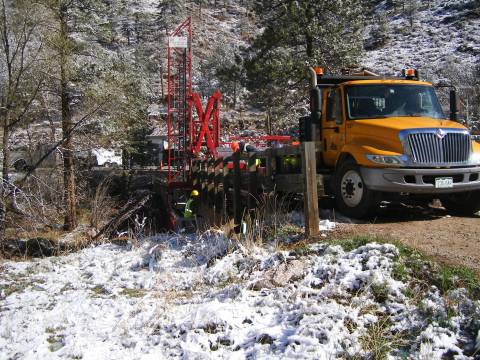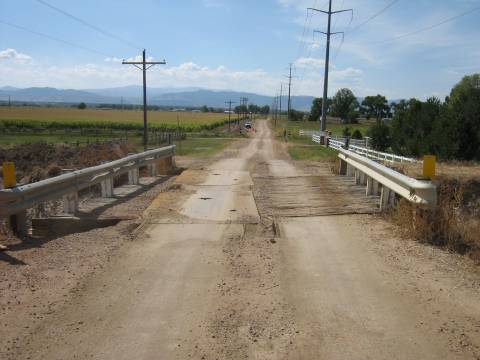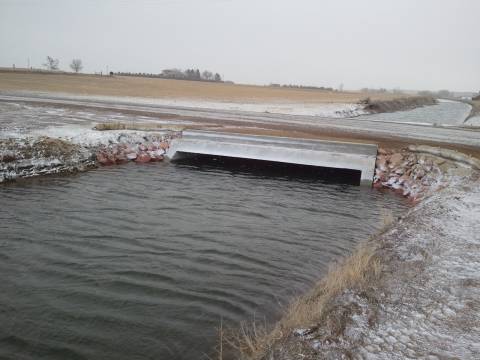Well maintained drainage systems are important to protect the roadway from damage and to promote safety. As runoff is generated on the surface of the road due to storm events (rain, snow melt) it is important to gather the runoff and convey it to an outfall, usually a natural drainage.
Larimer County's drainage systems are generally comprised of the following components; roadway cross slope, roadside ditches, culverts and bridges. Keeping these components clean and functional requires regular and routine maintenance to remove deposited sediment and debris. The Road and Bridge Department utilizes a variety of equipment including a rubber tired hydraulic excavator, motor graders, industrial flusher/vacuum trucks to accomplish these maintenance tasks.
Annually Road and Bridge cleans ~ 173,000 linear feet (33 miles ) of roadside ditch with a road grader and ~ 29,805 linear feet (5.5 miles) with the Gradal. Culvert cleaning with the industrial vacuum truck equates to ~10,149 linear feet (225 individual culverts) annually.
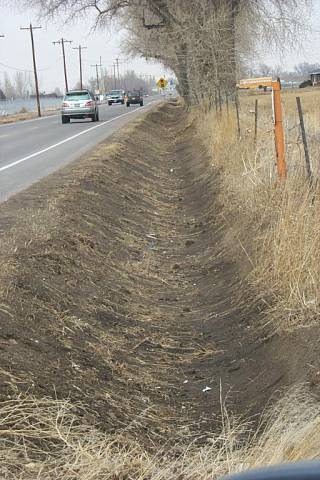
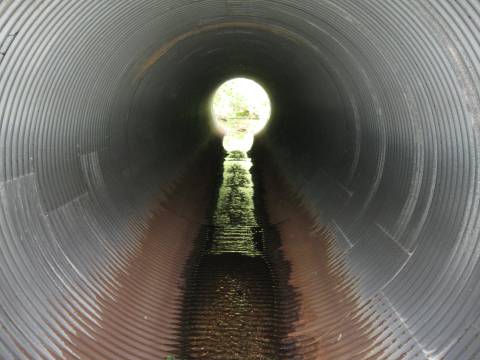
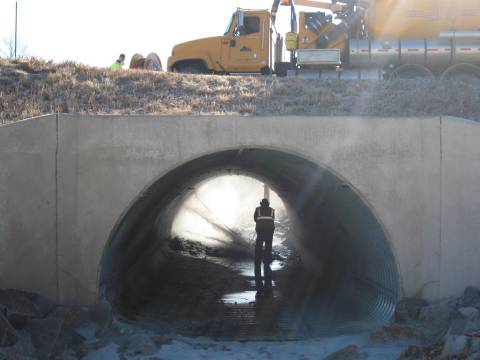
This team is responsible for installing new structures or replacing existing structures that have reached the end of their useful life. Larimer County has approximately 4000 cross culverts that convey storm water, irrigation water and historic natural drainages underneath the road surface.
Most of the culverts are corrugated steel pipe (CSP) or reinforced concrete pipe (RCP). Corrugated steel culverts are less expensive to purchase and install than the RCP, however they have a shorter lifespan. Lifespan is affected by many conditions including soil type, what type of drainage is running through the culvert or whether it has been damaged by an outside force.
A typical CSP culvert crossing replacement usually takes 2 1/2 days in a paved road, including the asphalt patch. We try to accomplish these without closing the road by doing a half at a time, so that the citizens traveling the road are disrupted as little as possible, even though it would be quicker to close the road, we try to balance the disruption, detour and our efficiency for the best value to the public.
Another maintenance option for a culvert that has reached the end of its useful life is to install an High Density Polyethylene (HDPE) liner. This option involves installing a slightly smaller HDPE liner inside the existing pipe. In most cases, the hydraulic capacity of the crossing is as good as or better than the original crossing due to the smooth wall liner pipe having better flow characteristics than the original pipe. Although the liner pipe material costs more per foot than CSP and smaller diameter RCP, the lining process eliminates costs associated with excavation, backfill, and roadway surface repair and can be done with minimal impact to the traveling public.
Annually, Road & Bridge installs ~2,300 linear feet of culvert, which is 51 45' long culverts.
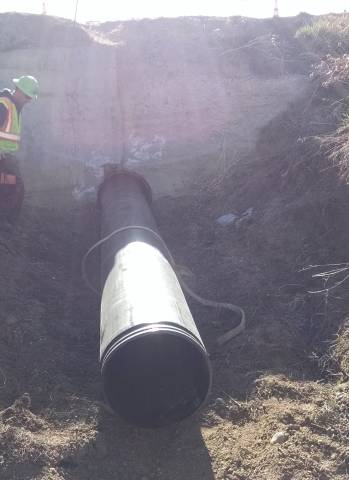
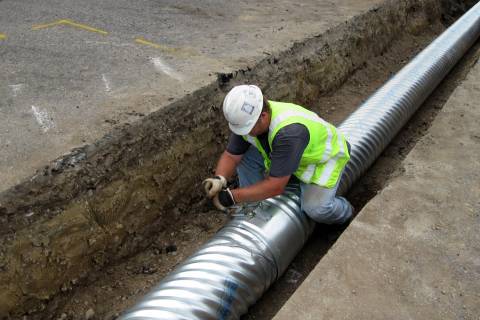
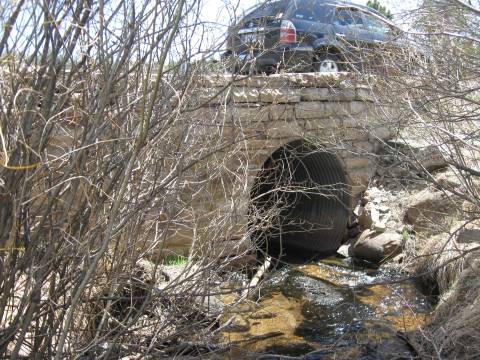
The State Department of Transportation categorizes structures as major or minor depending on the span length as measured down the centerline of the road. Major structures are those structures that are over 20' in length and minor structure are those structures that are between 4' and 20' in length.
Maintenance and repair of these structures include items such as scour protection to ensure stability of the structure and protect them from erosion at the footings; substructure repairs including abutments and piers; super structure repairs including girders/stringers, decks and curbs; ad ridge rail/guard rail.
All major structures are inspected on a 2 year cycle and all minor structures are inspected on a 4 year cycle. Maintenance items identified during these inspections are categorized and prioritized and then scheduled to be performed by County crews or contractors.
